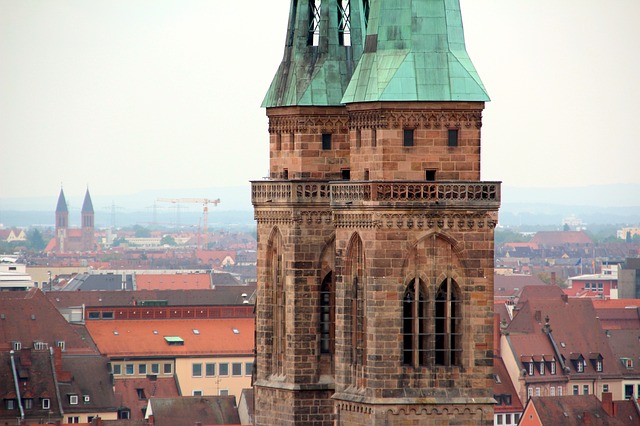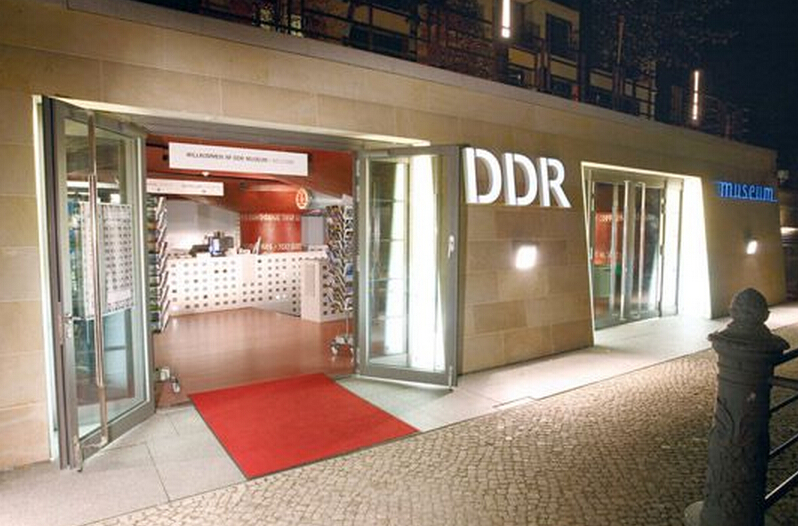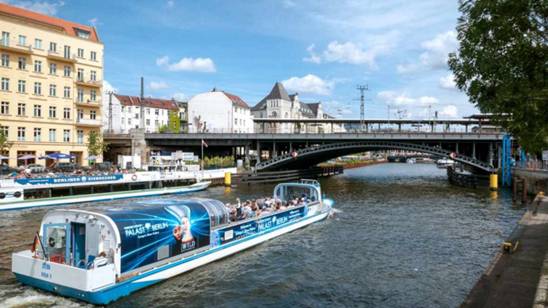Germany-Austria-Italy Grand Tour: A Comprehensive Travel Guide
This extensive itinerary covers a remarkable journey through the heart of Europe, connecting the financial powerhouse of Germany with the Alpine splendors of Austria and the artistic treasures of Italy. The route encompasses historic cities, fairytale castles, stunning coastal scenery, and world-renowned culinary regions. This guide provides a detailed, practical overview to help travelers navigate this epic trip.
Route Overview and Strategic Planning
The proposed route is a grand loop, typically starting and ending in Frankfurt, Germany. It is a complex journey best undertaken over a period of three to four weeks to fully appreciate the diverse destinations. The primary modes of transportation will be train and car, each offering distinct advantages. A Eurail Pass can be cost-effective for the long train journeys, while renting a car provides flexibility, especially for exploring the German and Italian countryside and smaller towns.
Best Time to Travel: Late spring (May-June) or early autumn (September-October) offer pleasant weather, fewer crowds, and vibrant landscapes.
Currency: Euro (€) is used in Germany, Austria, and Italy.
Key Transportation Hubs: Frankfurt Airport (FRA), Munich Airport (MUC), Rome's Fiumicino Airport (FCO).
Part 1: Germany & Austria - From Finance to the Alps
Frankfurt
Often the gateway to this journey, Frankfurt am Main is Germany's financial capital. While modern skyscrapers dominate its skyline, the city retains a charming, historic core known as the Römerberg.
Attractions: The reconstructed Römerberg square with its half-timbered houses, St. Bartholomew's Cathedral (Kaiserdom), and the Main Tower offering panoramic city views. The Museumsufer (Museum Embankment) houses a cluster of excellent museums.
Food & Drink: Try traditional Apfelwein (apple wine) in a Sachsenhausen district tavern. Accompany it with Handkäs mit Musik (a sour milk cheese with onions) or Frankfurter Würstchen.
Transportation: Frankfurt Airport is a major international hub. The city has an efficient U-Bahn and S-Bahn network. It is a central node for Germany's high-speed ICE trains.
Accommodation: Options range from luxury hotels in the banking district to more affordable stays near the Hauptbahnhof (main train station).
Ingolstadt & Munich
The journey south leads to Ingolstadt, a Bavarian city known for its Audi factory and well-preserved old town, before reaching the vibrant capital of Bavaria, Munich.
Attractions in Munich: Marienplatz with the Glockenspiel, the sprawling Englischer Garten, the opulent Nymphenburg Palace, and the world-famous Hofbräuhaus. A somber but important visit is the Dachau Concentration Camp Memorial Site, located just outside the city.
Food & Drink: Indulge in Bavarian classics: Weisswurst (white sausage) with sweet mustard, Schweinshaxe (roasted pork knuckle), Brezen (pretzels), and a Mass (one-liter stein) of beer at a traditional Biergarten.
Transportation: Munich's MVV network of U-Bahn, S-Bahn, and trams is comprehensive. It is a major rail hub for travel to Austria and other German cities.
Innsbruck
Crossing into Austria, the route arrives in Innsbruck, the capital of the Alps. Nestled in a valley, the city offers a unique blend of imperial history and stunning mountain scenery.
Attractions: The Golden Roof (Goldenes Dachl), the Imperial Palace (Hofburg), and the Nordkette funicular, which whisks visitors from the city center to high Alpine peaks in under 30 minutes.
Food & Drink: Sample Tyrolean specialties like Käsespätzle (cheesy egg noodles), Tiroler Gröstl (a hearty potato, bacon, and onion fry-up), and strudel.
Transportation: Innsbruck is well-connected by train from Munich (about 2 hours). The city itself is very walkable.
Part 2: Italy - Art, History, and Coastal Charm
Venice
The journey continues south into Italy, with the first stop being the utterly unique city of Venice, built on a lagoon.
Attractions: St. Mark's Square and Basilica, the Doge's Palace, a gondola ride through the canals, and the Rialto Bridge. Exploring the quieter neighborhoods of Cannaregio and Dorsoduro is highly recommended.
Food & Drink: Cicchetti (Venetian tapas) with an ombra (small glass of wine), fresh seafood risotto, and Bellini cocktails.
Transportation: Travel from Innsbruck to Venice by train (approx. 4-5 hours). In Venice, travel is on foot or by vaporetto (water bus).
Cultural Insight: Venice is perpetually crowded. To escape the masses, venture away from the main tourist trail between St. Mark's and the Rialto Bridge.
Florence
The cradle of the Renaissance, Florence is an open-air museum filled with unparalleled art and architecture.
Attractions: The Duomo (Cathedral of Santa Maria del Fiore) with its iconic dome by Brunelleschi, the Uffizi Gallery, the Accademia Gallery (home to Michelangelo's David), and the Ponte Vecchio.
Food & Drink: Bistecca alla Fiorentina (T-bone steak), Ribollita (Tuscan bread soup), and gelato. Chianti wine from the surrounding hills is a must.
Accommodation: Stay in a central B&B or a hotel with a view of the Arno River for an authentic experience.
Rome
The Eternal City needs little introduction. Rome is a sprawling metropolis where ancient history coexists with modern life.
Attractions: The Colosseum, Roman Forum, Pantheon, Trevi Fountain, Spanish Steps, and Vatican City (St. Peter's Basilica and the Sistine Chapel).
Food & Drink: Cacio e Pepe and Carbonara pasta, Supplì (fried rice balls), Pizza Romana (thin and crispy), and maritozzi for breakfast.
Transportation: Rome has a metro system, but many historic areas are best explored on foot. The city is a major train hub.
Tuscan Hill Towns & Pisa
Leaving Rome, the route heads north into Tuscany. This region is famous for its rolling hills, cypress trees, and medieval hilltop towns like San Gimignano, Siena, or Montepulciano.
Attractions: Exploring the winding streets of a Tuscan hill town, wine tasting at a local vineyard, and visiting the Piazza del Campo in Siena. A stop in Pisa is primarily to see the Leaning Tower within the Field of Miracles (Campo dei Miracoli).
Food & Drink: Pecorino cheese, wild boar salami (salumi di cinghiale), and world-class olive oil and wines like Brunello di Montalcino.
Transportation: This part of the journey is ideally done by rental car to freely explore the countryside.
Cinque Terre
The "Five Lands" are a string of five colorful fishing villages clinging to the cliffs of the Italian Riviera. They are part of a national park and a UNESCO World Heritage site.
Attractions: Hiking the scenic Sentiero Azzurro coastal trail that connects the villages of Monterosso al Mare, Vernazza, Corniglia, Manarola, and Riomaggiore. Taking a boat tour for a different perspective is also highly recommended.
Food & Drink: Fresh anchovies (acciughe), pesto Genovese (which originates from this region), and focaccia bread.
Transportation: The Cinque Terre Train Pass is ideal for hopping between villages. Cars are largely impractical here.
Milan
The final major stop in Italy is Milan, the country's global fashion and design capital.
Attractions: The magnificent Duomo di Milano (cathedral), the Galleria Vittorio Emanuele II shopping arcade, and seeing Leonardo da Vinci's "The Last Supper" (book tickets months in advance).
Food & Drink: Risotto alla Milanese (saffron risotto), Cotoletta alla Milanese (veal cutlet), and Panettone.
Transportation: Milan is a major transportation hub with several train stations (Centrale is the main one) connecting to Switzerland and Germany.
Part 3: Return Through Germany - Castles, Lakes, and History
The Alpine Return: Neuschwanstein & King's Lake
The journey north from Milan passes back through Innsbruck into southern Bavaria, a region of breathtaking natural beauty.
Neuschwanstein Castle: The fairytale castle that inspired Disney. Tickets must be purchased in advance, often from the ticket center in Hohenschwangau village. The view from Marienbrücke (Mary's Bridge) is iconic.
Königssee (King's Lake): A pristine Alpine lake near Berchtesgaden, often considered Germany's cleanest lake. An electric boat takes visitors to the pilgrimage chapel of St. Bartholomew and the Salet peninsula.
Accommodation: Stay in charming towns like Füssen (for Neuschwanstein) or Berchtesgaden (for Königssee) for easy access.
The Romantic Road: Rothenburg ob der Tauber & Nuremberg
This route heads north along the Romantic Road (Romantische Straße), a famous scenic route past well-preserved medieval towns.
Rothenburg ob der Tauber: A perfectly preserved medieval walled town. Walk the city walls, visit the Christmas Museum, and enjoy the view from Plönlein square.
Nuremberg (Nürnberg): A city with a rich history, known for its medieval castle, Gothic churches, its role in the Holy Roman Empire, and its connection to the Nazi Party Rallies and post-war trials. The Nuremberg Christkindlesmarkt is one of the world's most famous Christmas markets.
Food & Drink: In Nuremberg, try the small, spicy Nürnberger Rostbratwurst and Lebkuchen (gingerbread).
The Northern Capitals: Berlin, Lübeck & Hamburg
A detour north reveals a different side of Germany—cosmopolitan, historic, and maritime.
Berlin: The dynamic capital. Key sites include the Brandenburg Gate, Reichstag Building, East Side Gallery (remains of the Berlin Wall), Checkpoint Charlie, and numerous world-class museums on Museum Island.
Hamburg: Germany's great port city. Explore the warehouse district Speicherstadt (a UNESCO site), the new HafenCity area with the Elbphilharmonie concert hall, and take a boat tour of the harbor.
Lübeck: A beautiful Hanseatic city known for its Brick Gothic architecture and marzipan. The Holstentor gate is its symbol.
Transportation: High-speed ICE trains efficiently connect these northern cities.
The Final Leg: Göttingen & The Rhine Valley
The journey concludes by heading south towards Frankfurt, with stops highlighting academic history and romantic river scenery.
Göttingen:A historic university town. The tradition is to kiss the bronze statue of the Gänseliesel (Goose Girl) in the main square after receiving a doctorate.
The Rhine Valley & Rüdesheim:The Middle Rhine Valley between Bingen and Koblenz is a UNESCO World Heritage site, dotted with countless castles. Rüdesheim is a famous wine town on the Rhine. Take a river cruise or drive along the river to see the landmarks like the Lorelei rock.
Heidelberg:A romantic city renowned for its ruined castle overlooking the River Neckar and its historic university. Walking the Philosopher's Path offers stunning views.
Food & Drink:In Rüdesheim, try Rüdesheimer Kaffee (coffee with Asbach brandy) and sample the local Riesling wines.
General Travel Tips for the Region
Accommodation:A mix of hotels, guesthouses (Pensionen/Garni), and agriturismos (in Italy) offers varied experiences. Book well in advance for popular destinations during peak season.
Cuisine:Embrace regional specialties. Portions are often large. Tipping culture is less aggressive than in North America; rounding up the bill or leaving 5-10% is standard.
Cultural Etiquette:A simple "Guten Tag" in Germany/Austria or "Buongiorno" in Italy goes a long way. Be mindful of noise levels in residential areas, especially in the evening.
Shopping:Most shops in smaller towns and outside city centers are closed on Sundays. Plan accordingly.
Sustainability:The extensive and efficient train networks make this journey very feasible without a car, reducing your carbon footprint. When visiting natural sites like Cinque Terre or Königssee, follow marked paths and "Leave No Trace" principles.



